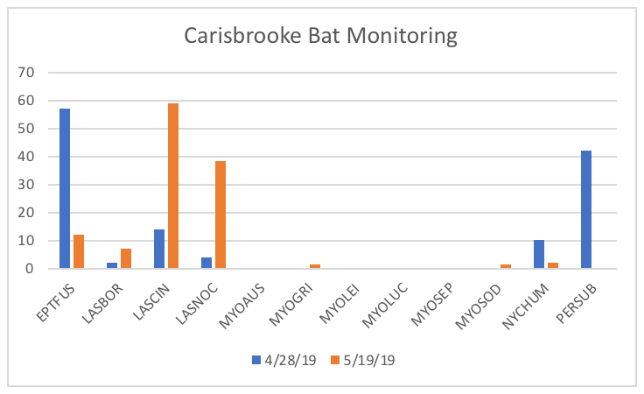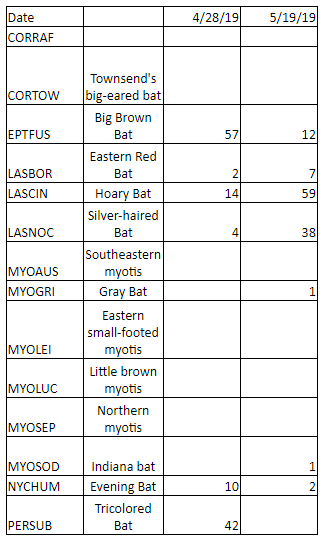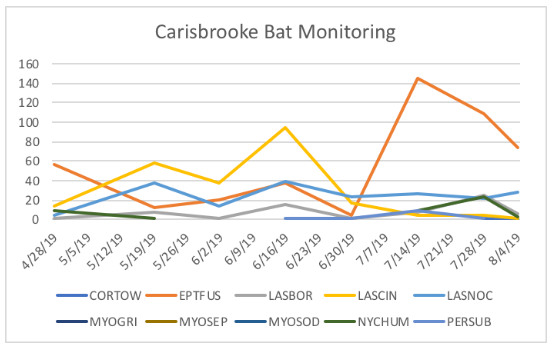July 2020 Update:
Our Carisbrooke community pond is a unique community asset that hosts diverse native species and gives our avid community anglers opportunities for recreational fishing. Over the years, pond management has included temperature and pH monitoring, barley grass application to discourage algae growth, and manual removal of American lily pads, pickerel weed, and cattails. Recently, the growth of “coon tail”, a native pond weed, resulted in significant pond coverage. While relatively harmless, its appearance is unattractive, it makes fishing difficult, and, over time, overgrowth can impact dissolved oxygen levels vital for aquatic life. We’ll be applying a treatment in early spring of next year that will target overgrowth of the coon tail as well as the cattails and lily pads. Early spring is the ideal time for application when growth of pond vegetation is vigorous, and treatment is most effective. We’ll continue monitoring and managing the pond throughout the summer including additional barley grass applications and manual vegetation removal. On your next stroll by the pond, make sure to pick some of the plump, ripe native blackberries for a healthy snack, watch the birds, or just take in the natural beauty that’s uniquely ours!
June 2020 Update:
Owls: We’ve identified 3 owls in the area: Barn Owl, Eastern Screech Owl, and Barred Owl. The Barn Owl was by far the spookiest and I was able to ID the sound from this audio recording. It’s the first one (very creepy).
Pond Algae: I ordered 3 bales of barley straw – enough to last for the next few years. One bale creates 6 large bags. I deployed two bags this weekend: one along the dam on the northeast end and the other near the inflow from the retention pond on Trask. However, algae does not appear to be the big issue.
Pond Weed: It appears that we have coontail, a common submerged pond weed, no roots. Pond coverage is about 50-60% and appears like “scum” (I had originally thought it was algae). Harmless, but not attractive and makes fishing difficult. I’ll need to get a positive ID from a biologist though. If confirmed, I’m not sure how it was kept in check for so many years. Did we ever have grass carp? They typically live 5-9 years, and love eating coontail. They are non-native and regulated so require a permit to stock. Or did we ever fertilize the pond? The manager of the Izaac Walton ponds routinely fertilizes. DGIF does not recommend chemical weed herbicides as weed kills increase organic matter in the pond, kill more than just the target plant, and can be costly.
Immediate, short-term control: “Rake” the pond (will regrow but quick removal). Requires a boat.
Long-term control: Grass carp. Requires permit and may not be able to stock until September as temps above 80 degrees not good for introduction (although it’s been cool – I’ll check the temp monitor for the last 30 days). Other disadvantages: they may not eat the coontail if there are other aquatic weeds it prefers and they tend to migrate out of a water body if there is an outflow (ours dries up quickly and has alot of rocks so may not be an issue). Read more here.
Fertilize the pond – need to get a positive weed ID first to avoid risk of feeding rather than discouraging weed growth.
Bats: I’ve been actively monitoring bats for the last few weeks each Sunday night (come join me one night – social distancing and masks of course!). I set up the monitor behind our house on the common ground at sunset and monitor for at least 1 hour. Activity has been up and down since the initial monitoring, but seems to have dropped considerably. See the chart below.







